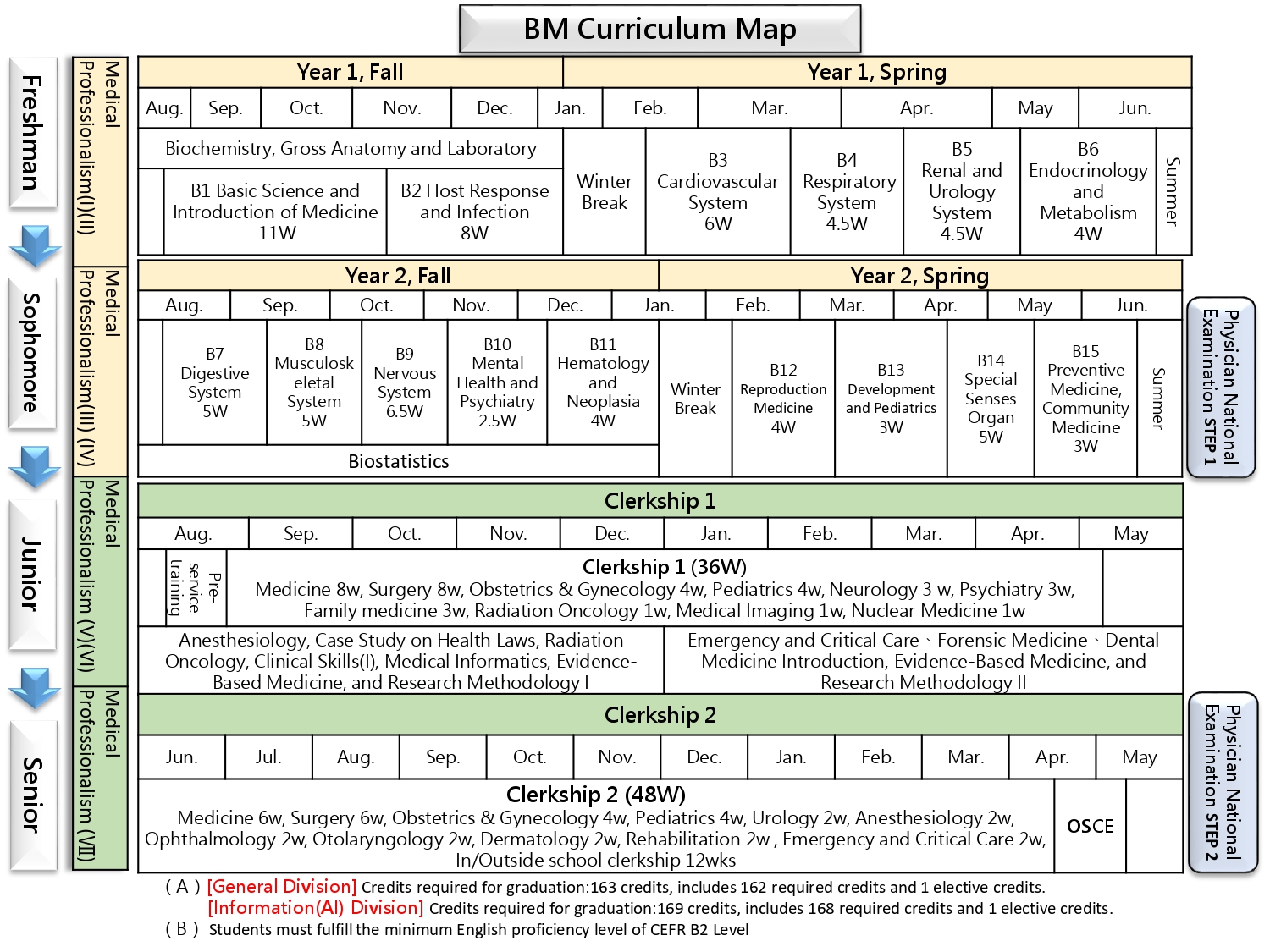FEATURES OF CURRICULUM
1. Early exposure to clinical by integration of basic science and clinical science.
2. Linkage of clinical skills with each block.
3. Self-direct and life-long learning via PBL teaching method.
4. Change of the learning style from pedagogy to andragogy.
5. Strengthen the medical professionalism.
6. In curriculum design, in entry to medicine, in methods of teaching and learning, in assessment of competence and in the continuum of education, the growth in the use of new learning technologies, etc. well prepared doctors.
7. Integrating medical humanities, medical ethics, basic science, clinical science, etc. to achieve perspective educational outcomes professional doctors.
INTEGRATING CLINICAL SKILLS INTO THE CURRICULUM FRAMEWORK
1. Clinical skills can precisely perform only by repeated practices besides the didactic lectures.
2. 15 blocks based on organ systems in the new integrated curriculum. (2005)
3. Organizer of each block is the most important key-person for planning & doing the organ system-based skills & GOSCE.
4. Chief of each clinical department is the main person responsible for planning & doing the department-based skills and OSCE.
5. 147 minimal required clinical competence of medical graduates suggested by Taiwan Medical Education Promotion Committee were all included.

The above is the Curriculum plan of the School of Post-Baccalaureate Medicine.
For the Curriculum plan of the School of Medicine(6 year program), please refer to https://smed.kmu.edu.tw/index.php/en-gb/curriculum.


